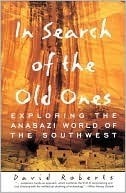What do you think?
Rate this book


360 pages, Kindle Edition
First published January 1, 1996
"kachinas [...] are reincarnated ancestors who act as messengers between the people and their gods."Many, many other fascinating topics are touched. For instance, Dr. Roberts ruminates on whether the Native American civilizations were Dionysian or rather Apollonian in nature. He writes about figuration vs. abstraction in the ancient Southwestern art, and claims that "virtually all Anasazi designs are abstract." Readers interested in linguistics will find a mention of glottochronology, a "promising science that tries to link language change with the migration, dispersion, and intermixing of peoples."